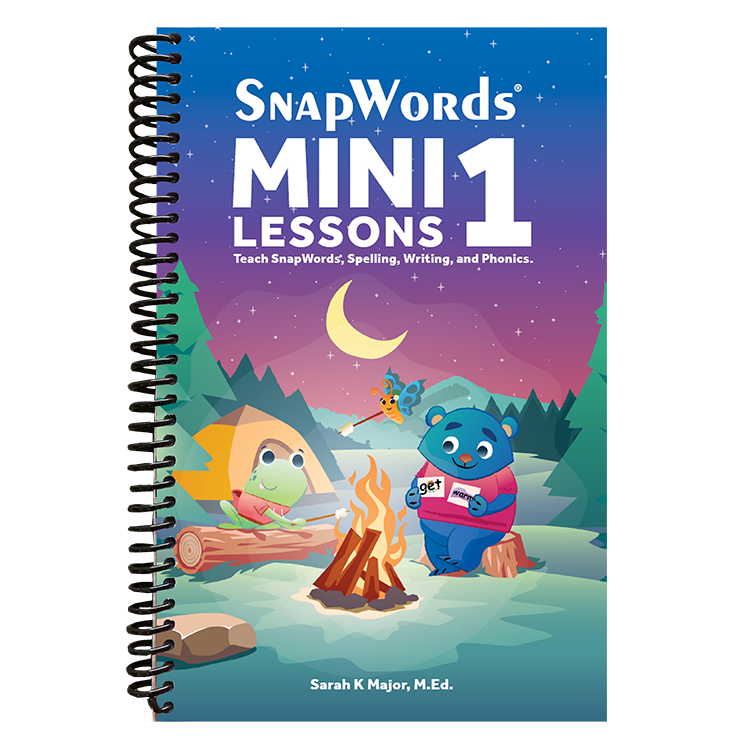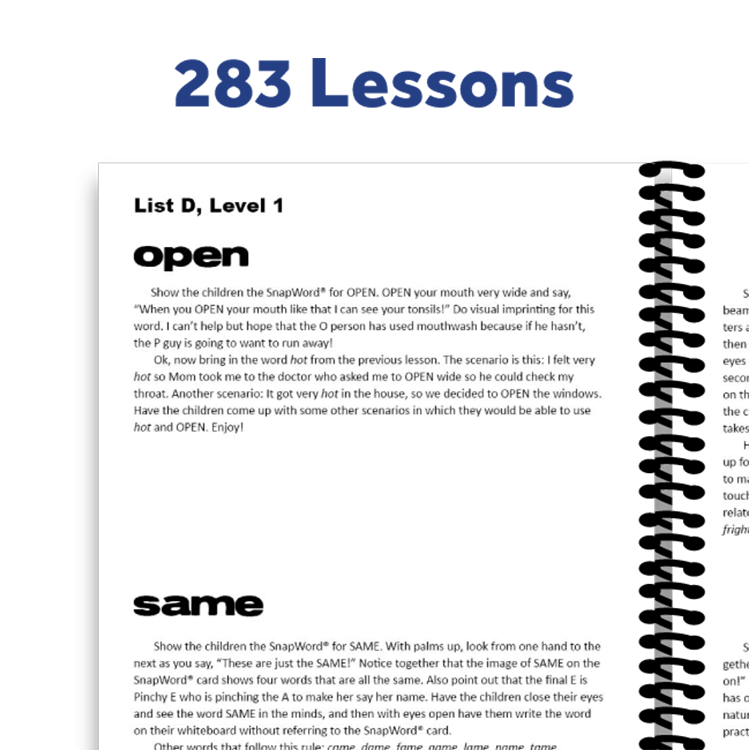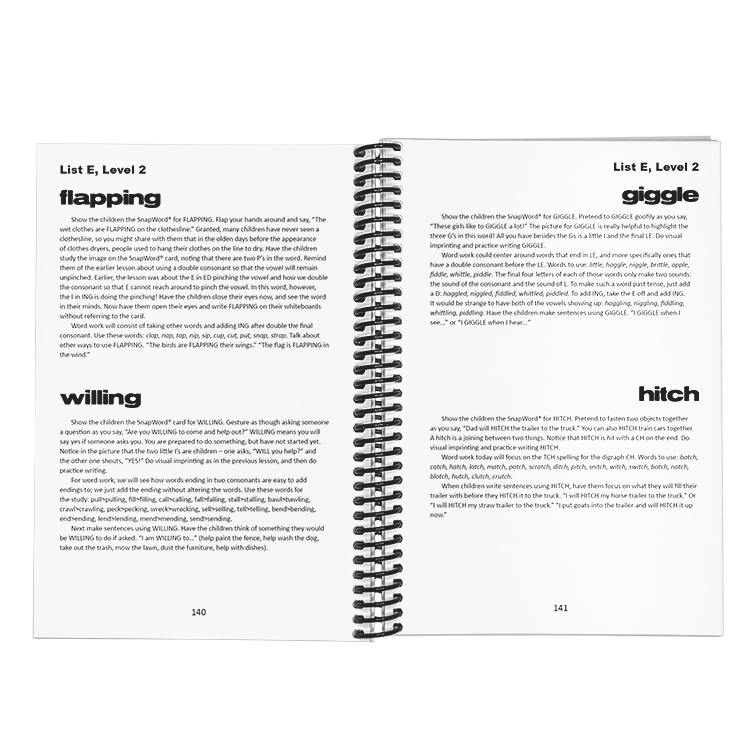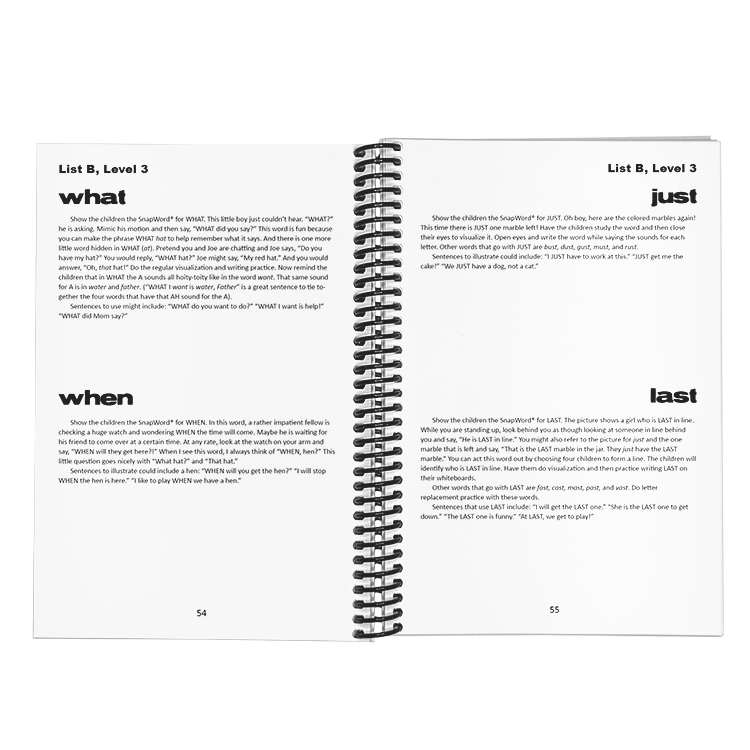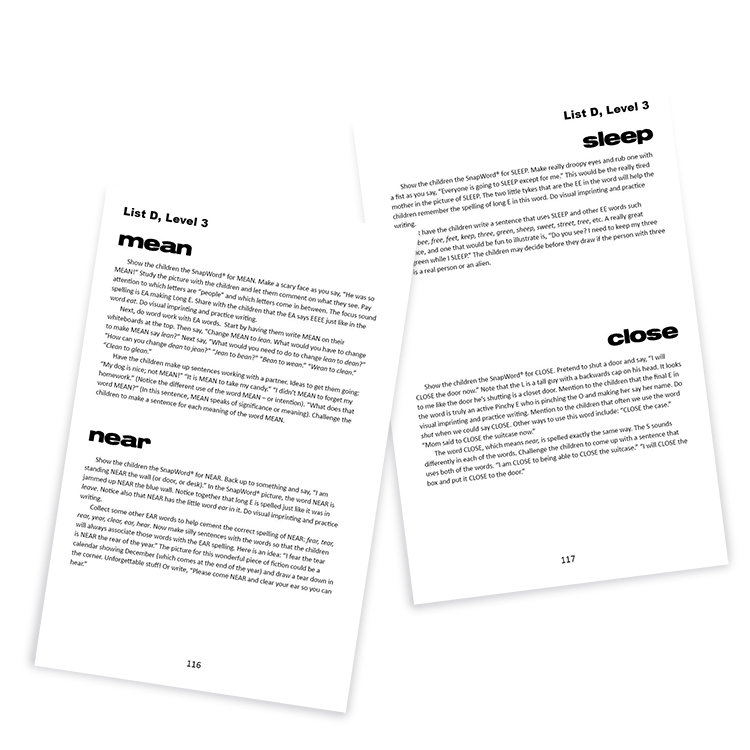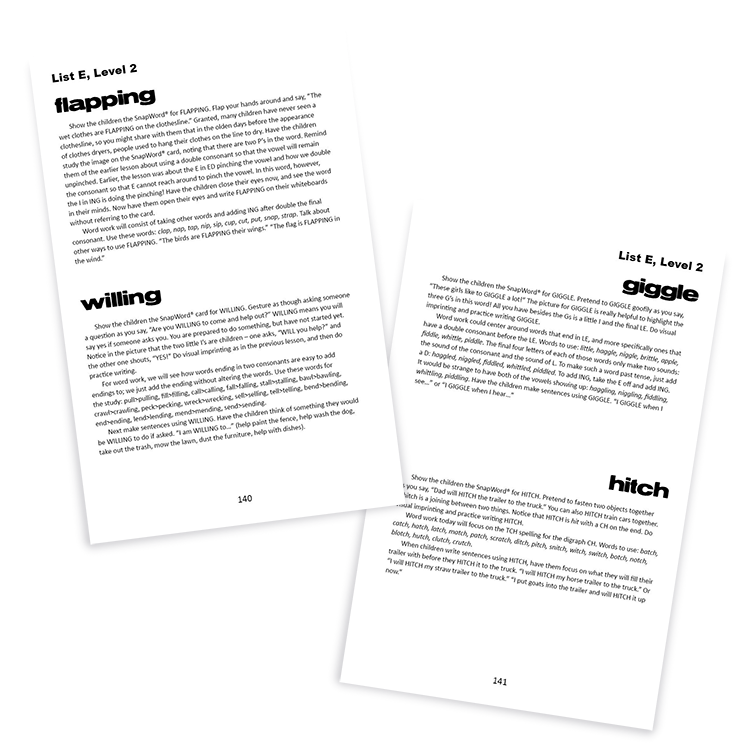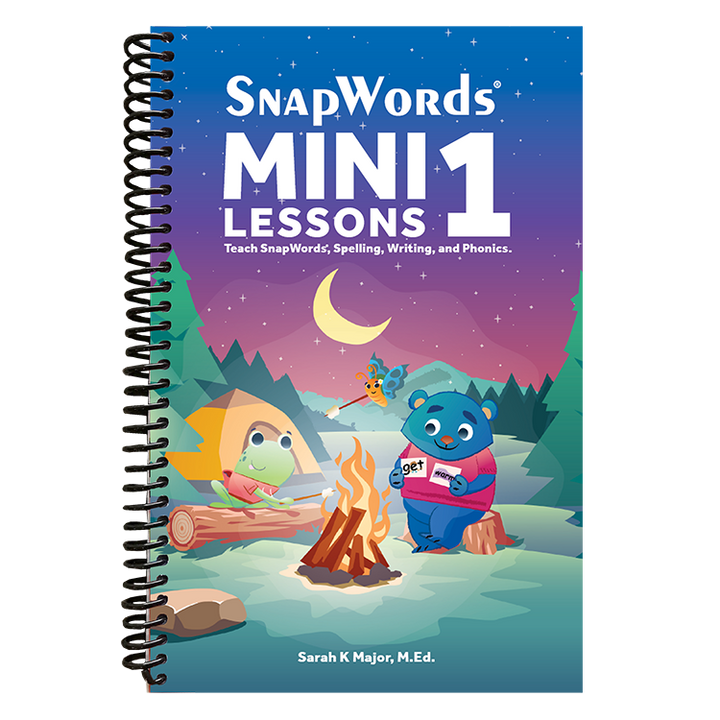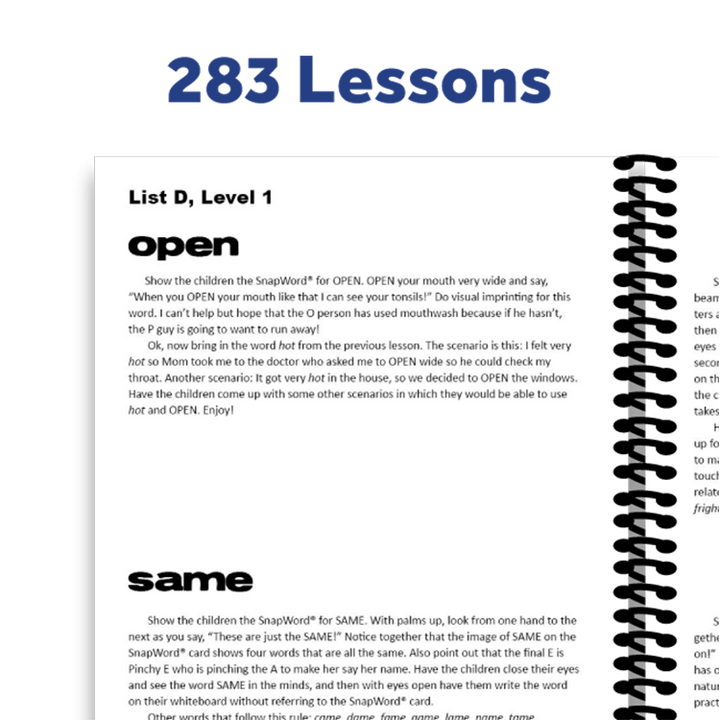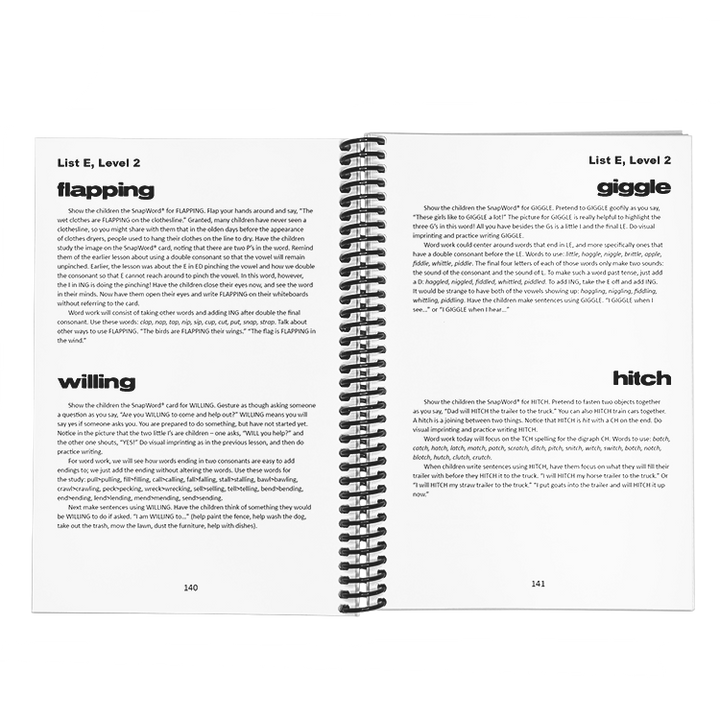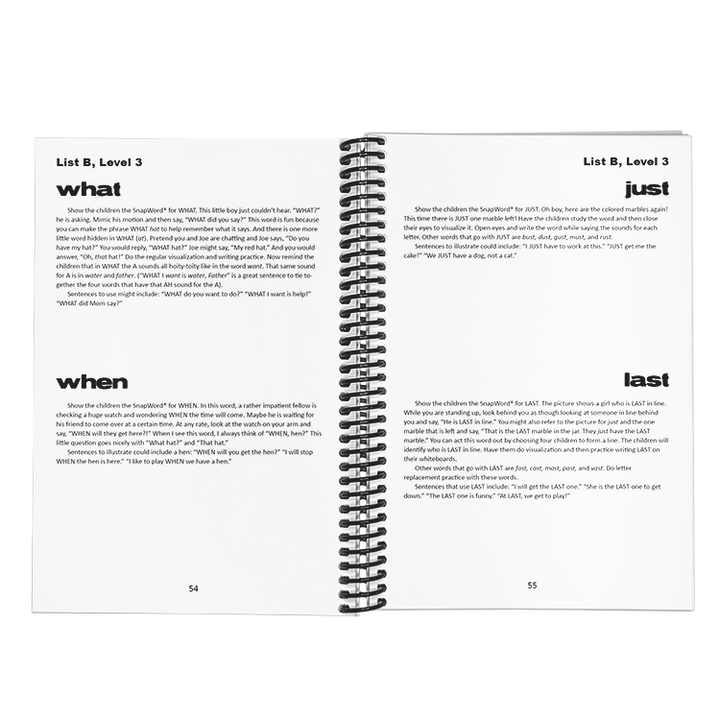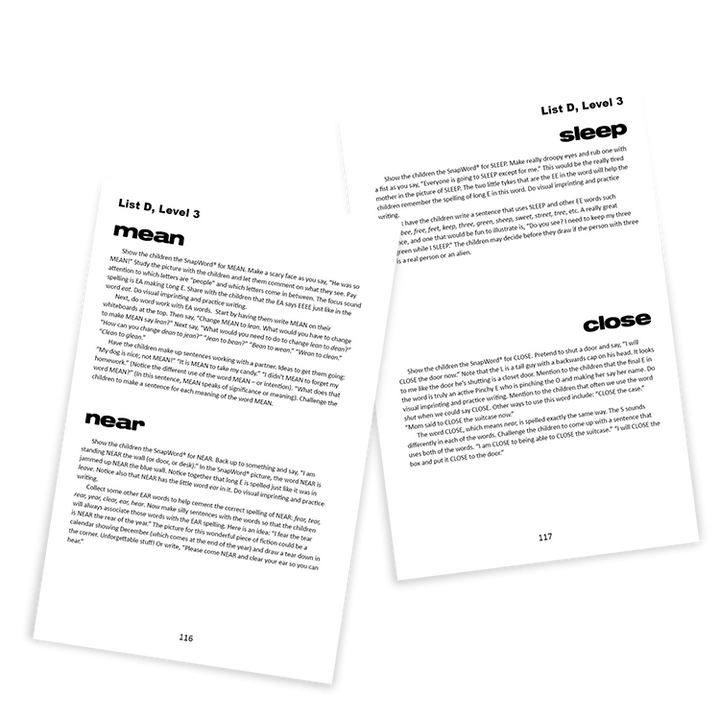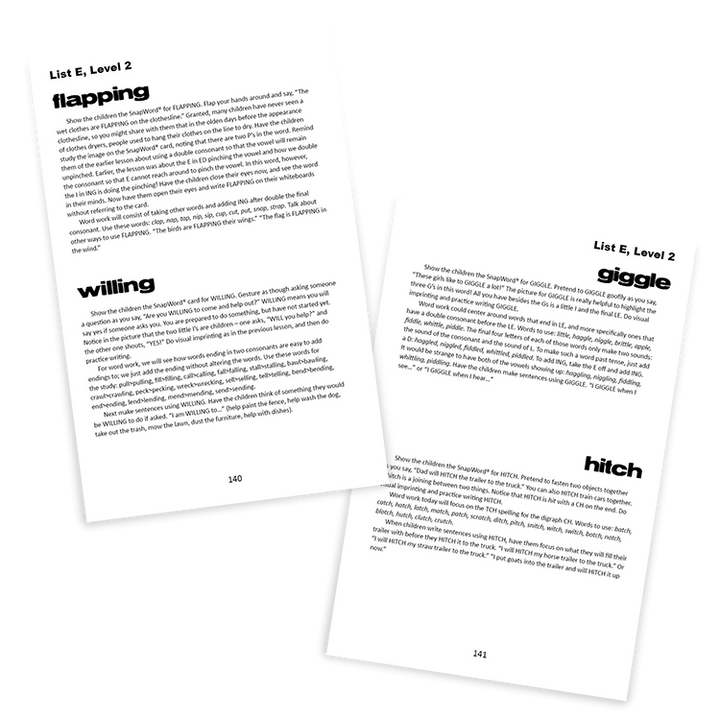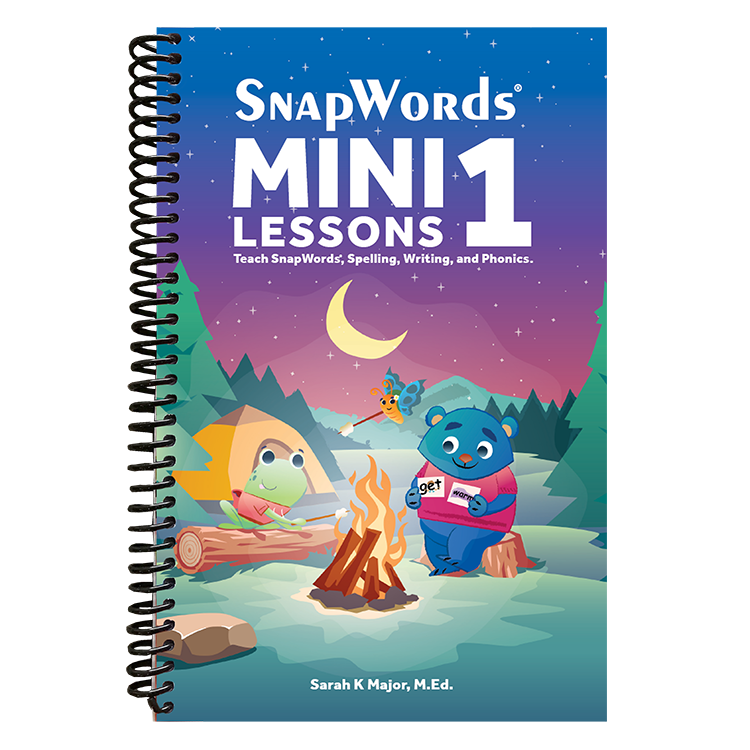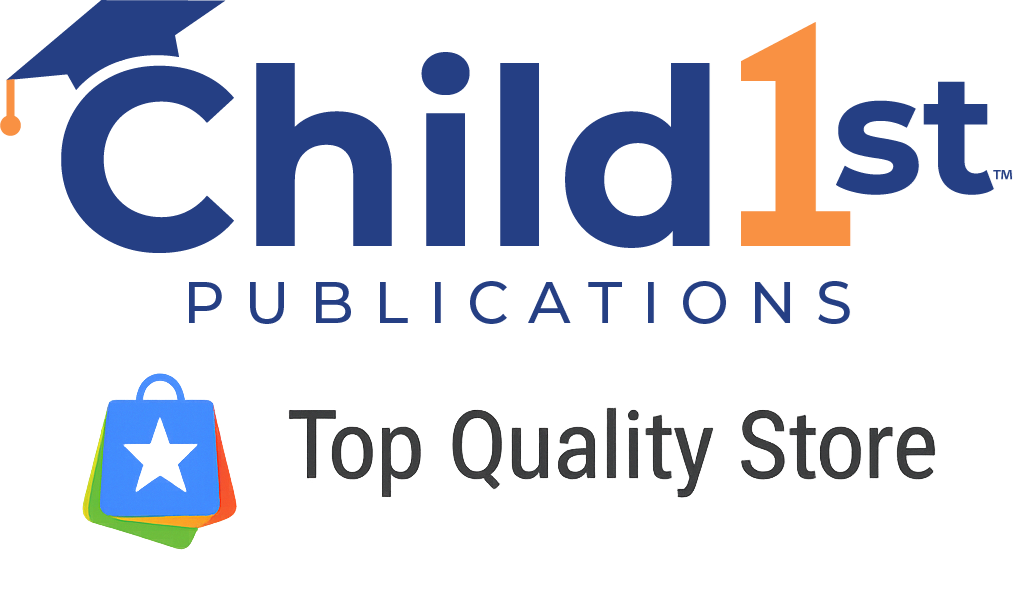Embark on a captivating educational voyage with SnapWords® Mini-Lessons 1, an indispensable resource spanning Lists A-E. This engaging series redefines the teaching experience, offering mini-lessons tailored for each SnapWord®. From visualization prompts that spark imagination to comprehensive comprehension exercises, phonics exploration, and dynamic writing practices, Mini-Lessons 1 is your key to unlocking the full potential of the first five lists of SnapWords®. Part 1 takes you on a journey through word introductions and structural analysis, while Part 2 unleashes a plethora of games and activities designed to reinforce word recognition, oral and tactile building, and the seamless connection between reading and writing. Elevate your teaching prowess and captivate learners with this holistic approach to SnapWords® instruction. Let the educational adventure begin!
What’s Included
SnapWords® Mini-Lessons 1 includes 176 pages containing:
283 Lessons - One for each SnapWord® in Lists A, B, C, D, & E
26 Games & Activities for Word Recognition, Reading, Writing, Comprehension, Structural Analysis of Words, & Phonemic Awareness



